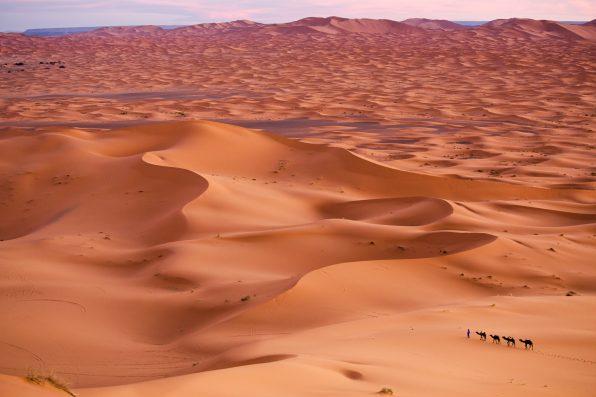Over The Past 800,000 Years, The Sahara Desert Turned Green, And Now Scientists Think They Have Figured Out Why

Today, the Sahara desert is known as one of the largest, hottest, and driest landscapes in the world. But over the past 800,000 years, the desert periodically turned green with vegetation. Now, scientists think they have figured out the cause behind these “green phases.”
Every 21,000 years, the Sahara desert experienced wet periods, giving rise to lakes, rivers, and animals that depend on these bodies of water, such as hippos.
Climate scientists have determined that the regular wet periods in the Sahara desert were brought about by changes in the Earth’s orbit around the sun. They also found that the cycle of wet periods did not repeat during the ice ages.
“The cyclic transformation of the Sahara desert into savannah and woodland ecosystems is one of the most remarkable environmental changes on the planet,” said Edward Armstrong, lead author of the study.
By creating a model that simulated the intervals of “greening” in the desert, researchers were able to understand how and why they happened.
Additionally, the study led them to realize that the humid events were affected by the ice sheets in the Northern Hemisphere.
When the Earth wobbles on its axis during a process called “orbital precession,” it influences the amount of energy that the planet receives in different seasons. As a result, this affects the strength and intensity of the African monsoon.
Orbital precession causes warmer summers in the Northern Hemisphere, triggering the North African Humid Periods, which increased the amount of precipitation and the spread of vegetation across the region.
The findings from the study also showed that the humid periods did not occur during the ice ages. The ice ages were a time when large sheets of ice covered much of the high latitudes. They cooled the atmosphere and prevented the African monsoon system from expanding.

Photo 39115498 © Valentin M Armianu – Dreamstime.com – illustrative purposes only
The alternation of the green phases and the desert phases contributed to the dispersal and evolution of many species in and out of Africa, including early humans.
“The Sahara region is kind of a gate controlling the dispersal of species between both North and Sub-Saharan Africa, and in and out of the continent. The gate was open when the Sahara was green and closed when deserts prevailed,” said co-author Miikka Tallavaara.
Due to the success of the recent climate model of the North African Humid Periods, scientists are now able to better understand the developments that occurred in Africa.
If true crime defines your free time, this is for you: join Chip Chick’s True Crime Tribe
In 1978, This Mom Of Three From Nebraska Mysteriously Vanished After Visiting A Local Bar
This Towel Rolling Technique That Will Make Your Bathroom Feel Like A Beautiful Five-Star Hotel
Sign up for Chip Chick’s newsletter and get stories like this delivered to your inbox.
More About:News